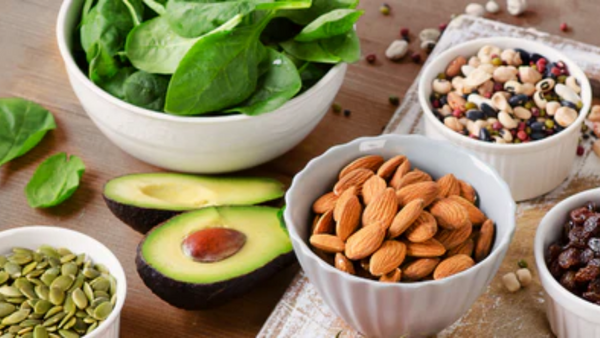Nowadays we are exposed to many pollutants such as heavy metals, fine dust, pesticides, herbicides and many other chemicals. They are found in food, in the air, in water, in packaging and cosmetics. And our bodies also produce many toxic metabolic products every day that we need to detoxify.
The body has many detoxification mechanisms. The problem is that it needs a lot of nutrients to detoxify. Not only are we exposed to more and more pollutants these days, but the nutrient density of food is also decreasing. As a result, the body often does not have enough nutrients to effectively get rid of toxins.
IT'S WORTH READING!
AT THE END OF THE ARTICLE WE HAVE PROVIDED YOU A VOUCHER CODE.
Detoxify the body with nutrients
Diet plays an essential role in detoxification. It provides many nutrients that are important for detoxification. Nutrients support detoxification in various ways:
- During detoxification, nutrients are also eliminated along with the toxins. This is especially true for detoxification treatments and chelation therapies for heavy metal detoxification. It is therefore important to ensure a particularly good supply of nutrients before and during a detoxification treatment.
- Many nutrients are involved in detoxification processes. For example, the detoxification enzymes in the liver require a number of nutrients to function properly.
- Many nutrients can bind nutrients and thus have a detoxifying effect.
Vitamin C
Vitamin C is a powerful antioxidant that protects against free radicals. It therefore helps to reduce oxidative stress that occurs during detoxification processes.
In addition, vitamin C activates liver enzymes that are involved in the detoxification process in the liver. [1]
Vitamin C also promotes lead detoxification and a good supply of vitamin C reduces lead toxicity. [2]
secondary plant substances
Secondary plant substances such as polyphenols, terpenes and alkaloids have an antioxidant effect. They can reinforce each other's effects and also influence the effectiveness of vitamin C. Flavonoids, for example, support the effectiveness of vitamin C. [3] Secondary plant substances are found in fruit and vegetables. Intense colors such as in berries, peppers and beetroot indicate a high content of secondary plant substances.
Curcumin
Curcumin is an ingredient in curcuma , a South Asian ginger plant also known as turmeric. Curcumin has cancer-preventing properties. It can also reduce inflammation and promotes the detoxification process. [4]
The detoxifying effect is due to the fact that curcumin is very bitter. This stimulates the production of stomach acid and digestion. It also stimulates the production of bile, which increases the excretion of toxins.
Alpha-lipoic acid
Alpha-lipoic acid is a sulfur-containing fatty acid. It is used in the treatment of diabetic neuropathy, but can also effectively support the detoxification process.
Alpha-lipoic acid serves as a coenzyme in numerous metabolic processes. It also acts as an antioxidant that helps fight free radicals. It can regenerate used antioxidants such as vitamin E, vitamin C, coenzyme Q10 and glutathione. Alpha-lipoic acid is found in meat and also in some vegetables. Alpha-lipoic acid is also available as a dietary supplement that requires a prescription.
Vitamin E
Vitamin E is a fat-soluble vitamin. It is also an antioxidant and is therefore an effective radical scavenger.
Vitamin E is important for the absorption of selenium and can enhance its antioxidant functions. Vitamin E is also involved in the detoxification of heavy metals, such as mercury. [5]
N-acetylcysteine and MSM
Cysteine is an amino acid that the body can produce to a limited extent from the amino acids methionine and serine.
Cysteine can form complexes with heavy metals, allowing them to be excreted. Cysteine is usually used in the form of N-acetyl-cysteine.
Cysteine and MSM (methylsulfonylmethane) both contain sulfur groups that help regenerate glutathione. [6] , [7] Glutathione is an antioxidant and a key detoxification molecule.
selenium
Selenium is important for the thyroid and has central functions in energy metabolism. It also plays an important role in glutathione metabolic pathways, thereby supporting detoxification.
Selenium can also bind heavy metals such as mercury, making them easier to detoxify. [8]
zinc
Zinc is a component of many enzymes and has antioxidant properties. It is also involved in the glutathione signaling pathway, which makes it an effective detoxification aid. [9]
iodine
Iodine supports detoxification by binding heavy metals and forming complexes with many pollutants.
Other elements of nutrition
Dietary fiber promotes detoxification by stimulating liver and gall bladder function. It also binds toxins in the intestines, making them easier to eliminate.
Vegetables, especially green leafy vegetables, can also promote detoxification. The green color is due to the plant pigment chlorophyll, which can bind many pollutants. This is why the microalgae chlorella is so popular for detoxification.
Conclusion: Nutrients are essential detoxification aids
The body needs a lot of nutrients to detoxify effectively. A high level of toxicity therefore deprives the body of nutrients. If the diet does not provide enough nutrients, deficiencies can arise. A targeted intake of certain vitamins, minerals and secondary plant substances can effectively support detoxification.
WE HAVE YOU A 10 % VOUCHER FOR OUR Vitamin C , Turmeric , Coenzyme Q10 , MSM , Iodine from organic Kelp , Zinc & Copper and Selenium Tablets PROVIDED AND HOPE TO BRING YOU JOY WITH IT.
SIMPLY COPY THE COUPON CODE DETOXIFEN+V10 AND ENTER IT AT CHECKOUT.
To the products
[1] https://www.scirp.org/journal/paperinformation.aspx?paperid=102322
[2] https://www.ncbi.nlm.nih.gov/pmc/articles/PMC3875841/
[3] https://pubmed.ncbi.nlm.nih.gov/30044505/
[4] https://pubmed.ncbi.nlm.nih.gov/20229497/
[5] http://www.foodsciencejournal.com/archives/2017/vol2/issue3/2-3-25
[6] https://www.nature.com/articles/srep30033
[7] https://pubmed.ncbi.nlm.nih.gov/21899544/

















